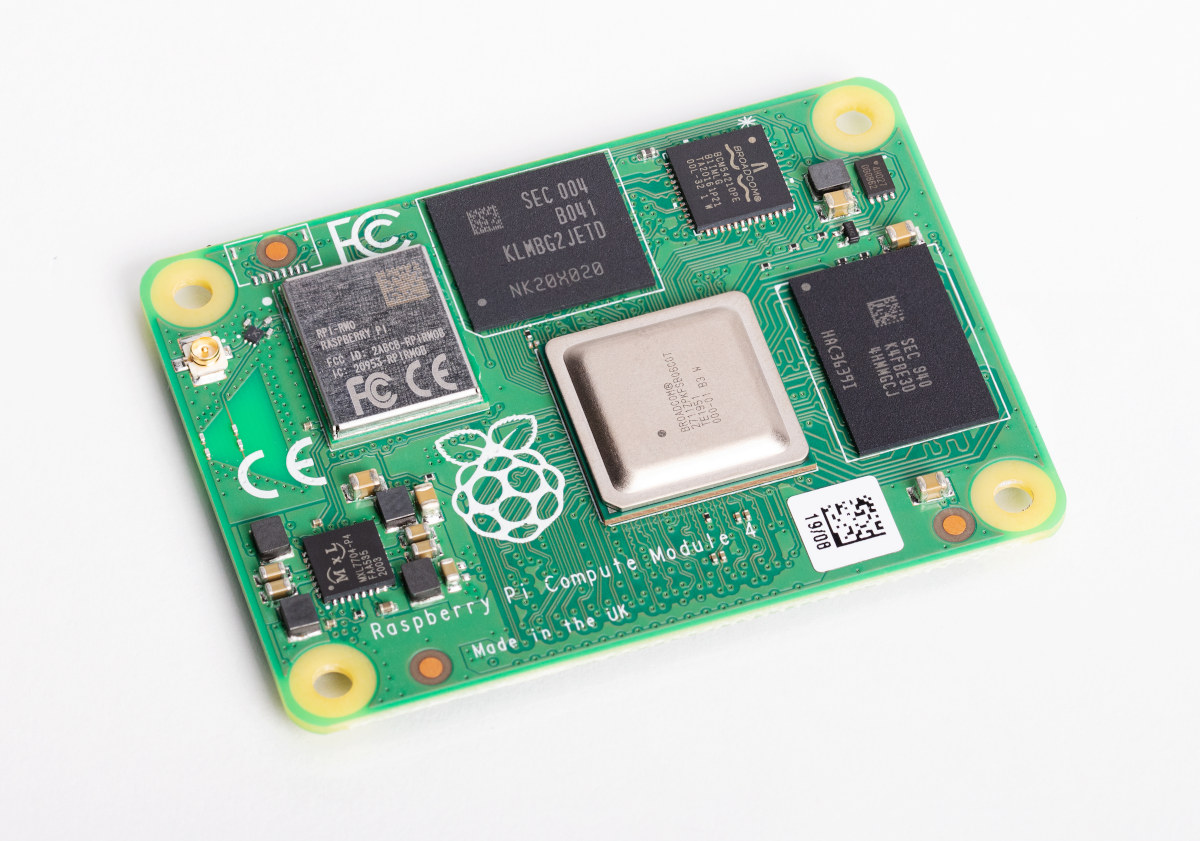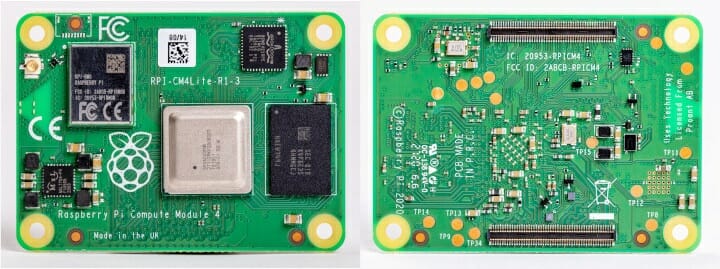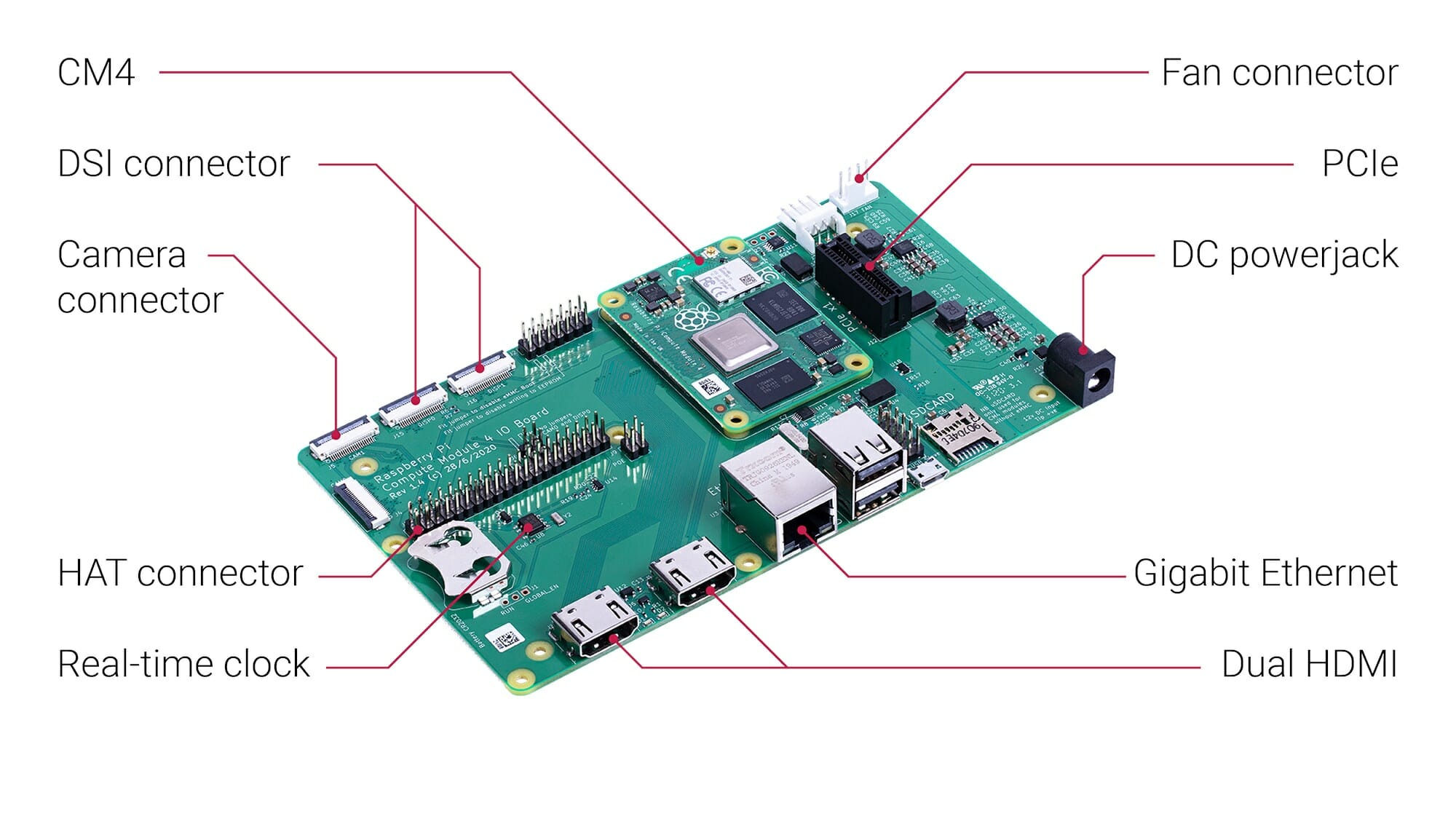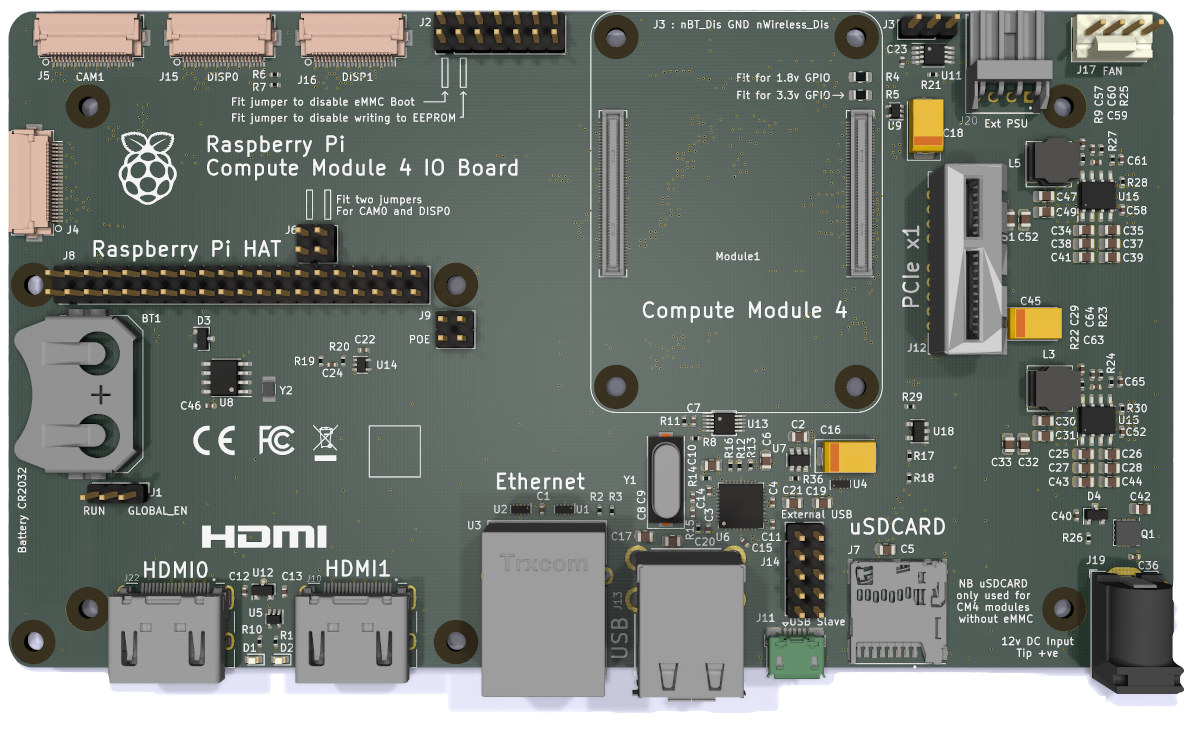We were expecting Raspberry Pi Compute Module 4 sometimes next year, but Raspberry Pi Trading Limited managed to launch the new module much earlier, as Raspberry Pi CM4 and CM4Lite modules have just been launched with a new, much more compact form factor incompatible with the earlier Compute Modules, an I/O board making use of the new features, and a choice of 32 models with variations in terms of memory and storage capacity, as well as the presence or lack thereof of a WiFi and Bluetooth wireless module.
Raspberry Pi CM4 & CM4Lite

Specifications:
- SoC – Broadcom BCM2711 quad-core Cortex-A72 processor @ 1.5 GHz with VideoCore VI GPU
- System Memory – 1, 2, 4, or 8GB LPDDR4-3200 SDRAM
- Storage – CM4: 4, 8, 16, or 32GB eMMC flash up to 100MB/s; CM4Lite: No storage device on module
- Networking
- Gigabit Ethernet transceiver
- Optional Wireless module with 802.11b/g/n/ac WiFi 5 and Bluetooth 5.0; external or PCB antenna (selectable by on-board electronic switch)
- 2x 100-pin high-density board-to-board connectors with:
- Storage – CM4Lite only: SDIO 2.0 for SD card on carrier board
- Video Output
- 2x HDMI 2.0 ports
- 1 x 2-lane MIPI DSI camera port
- 1 x 4-lane MIPI DSI camera port
- Camera I/F
- 1x 2-lane MIPI CSI camera port
- 1x 4-lane MIPI CSI camera port
- Ethernet – Gigabit Ethernet
- USB – 1x USB 2.0 host
- PCIe – 1x PCIe 1-lane Host, Gen 2 (5Gbps)
- 28x user GPIO (3.3v or 1.8v) also configurable as 6x UART, 6x I2C, 5x SPI, SDIO, 1x DPI (Parallel RGB Display), 1x PCM, 2x PWM, 3x GPCLK outputs
- Supply Voltage – 5V
- Dimensions – 55 x 40 x 4.7mm with 4x M2.5 mounting holes

The Raspberry Pi Computer Module 4 also comes with an optional I/O board and an antenna (kit).

There’s also a PoE header, a USB header with two USB 2.0 interfaces, a micro USB port for firmware updates, some configuration jumpers (for wireless, EEPROM writing…), and a 12V DC jack.
Raspberry Pi Compute Module 4 Pricing
As mentioned in the introduction, there are plenty of variants for Raspberry Pi CM4/CM4Lite module with price ranging from $25 to $90 as shown in the table below.
RPTL standards for “Raspberry Pi Trading Limited” and I suppose it’s some kind of ordering code. We can see from the table some of the modules will only be available in bulk with a minimum order quantity, mostly RPI CM4 systems-on-module without wireless module. Raspberry Pi guarantees the availability of the CM4 until at least January 2028. The IO board will sell for $35, and the antenna for $5.
You’ll find the module for purchase on distributors like RS Components, Cytron, Element14, Seeed Studio, and many others.

Jean-Luc started CNX Software in 2010 as a part-time endeavor, before quitting his job as a software engineering manager, and starting to write daily news, and reviews full time later in 2011.
Support CNX Software! Donate via cryptocurrencies, become a Patron on Patreon, or purchase goods on Amazon or Aliexpress





